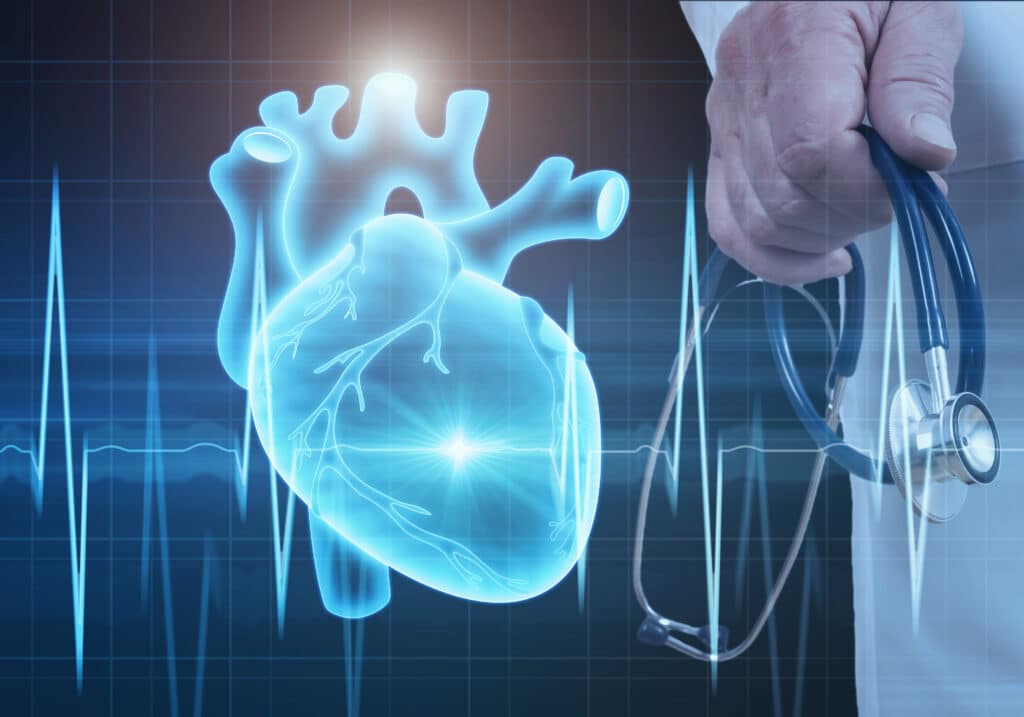Everything you’ve wanted to ask about Cardiology care, explained
Everything you’ve wanted to ask about Cardiology care, explained
Blog Article
Understanding the Importance of Cardiology in Modern Health Care Solutions
Cardiology plays an important function in modern health care, especially as heart problem proceeds to be the leading reason of death worldwide. Breakthroughs in diagnostics and therapy have actually changed person treatment, allowing earlier treatments and enhanced results. The shift towards preventive cardiology empowers individuals to handle their wellness proactively. As modern technology proceeds to progress, the combination of cutting-edge options might better redefine cardiology's influence on public wellness, motivating a better exam of arising trends and their implications.
The Prevalence of Cardiovascular Disease and Its Influence On Public Health
Although cardiovascular disease remains the leading cause of fatality globally, its influence prolongs far beyond individual people to influence public wellness systems and economies. The high prevalence of heart problem places a substantial strain on health care resources, requiring raised financing for prevention, therapy, and rehabilitation programs. Public health and wellness campaigns should resolve danger variables such as weight problems, smoking cigarettes, and inactive way of lives, which add considerably to the climbing incidence of heart conditions.Moreover, the financial worry connected with heart problem is immense, including not just straight medical costs but likewise indirect costs connected to lost productivity and premature death. Areas face difficulties in handling these prices, frequently causing differences in healthcare access and results. As the populace ages and lifestyle-related threats proceed to escalate, the urgency for effective cardiology interventions becomes critical. As a result, attending to heart problem is not just an issue of specific wellness yet also a vital public health and wellness concern.
Advancements in Cardiac Diagnostics and Imaging Techniques
Current innovations in heart diagnostics and imaging methods have transformed the field of cardiology, boosting the capacity to find and keep an eye on cardiovascular disease. Techniques such as heart MRI, CT angiography, and echocardiography have actually become increasingly sophisticated, giving in-depth pictures of cardiac frameworks and functions. These modalities enable the very early identification of problems like coronary artery condition, cardiac arrest, and valvular disorders.Moreover, developments in non-invasive diagnostics, such as wearable technology and remote surveillance gadgets, have actually encouraged individuals and healthcare companies. These devices assist in real-time tracking of heart rhythms and various other necessary signs, bring about timely treatments. Furthermore, artificial knowledge is being incorporated into imaging evaluation, enhancing precision and effectiveness in medical diagnosis.
Advancements in Treatment Choices for Heart Conditions
Current advancements in cardiology have actually led to substantial innovations in therapy options for heart problems. These consist of sophisticated surgical methods that boost procedural end results and emerging medications that provide brand-new avenues for treatment. As the area evolves, these developments play a crucial duty in enhancing individual treatment and outcomes.
Advanced Surgical Techniques
Advancements in medical techniques have transformed the landscape of cardiology, supplying brand-new hope for individuals with heart problems. Minimally intrusive procedures, such as catheter-based interventions, have actually greatly decreased healing times and medical facility remains. Methods like robotic-assisted surgical procedure improve accuracy, permitting surgeons to navigate complex anatomical structures with higher accuracy. Moreover, developments in imaging innovation assist in real-time visualization throughout treatments, improving outcomes. Transcatheter aortic shutoff substitute (TAVR) exhibits a development in treating aortic constriction, allowing shutoff substitute without open-heart surgery. Furthermore, hybrid strategies that combine medical and catheter-based techniques offer tailored remedies for numerous heart concerns. These advanced surgical strategies not just enhance individual safety and security yet additionally expand therapy choices, highlighting the important role of technology in modern-day cardiology techniques.
Arising Medicines and Therapies
As the landscape of cardiology continues to advance, emerging medications and treatments play an essential function in boosting therapy options for heart problems. Advancements such as novel anticoagulants and advanced lipid-lowering representatives have changed the administration of cardiovascular conditions, considerably decreasing patient morbidity and death. Additionally, the development of genetics therapies and regenerative medication uses promising opportunities for treating problems previously regarded irreparable. Clinical tests are continually revealing the efficiency of these therapies, pushing the borders of typical therapies. Additionally, the combination of electronic health and wellness modern technologies facilitates individualized medication, permitting customized therapy plans based upon hereditary and lifestyle elements. Collectively, these innovations underscore the vibrant nature of cardiology, boosting client results and redefining criteria of treatment in modern health care.
The Role of Preventive Cardiology in Person Care
Preventative cardiology plays a vital duty in patient care by concentrating on the recognition of threat factors that add to cardiovascular disease. Via way of living modification techniques and very early detection methods, medical care service providers can efficiently lower the occurrence of cardio occasions - Cardiology care. This aggressive approach not only improves client results however additionally advertises lasting health
Risk Aspect Recognition
While cardio diseases remain a leading reason of morbidity and mortality worldwide, efficient threat aspect recognition acts as a keystone of preventive cardiology. Recognizing risk elements such as hypertension, hyperlipidemia, diabetes mellitus, and family members background is essential for very early intervention. Medical care experts use numerous screening approaches to assess these elements, permitting tailored safety nets. Additionally, understanding a patient's way of life options, such as smoking and physical inactivity, better educates danger evaluations. This extensive analysis allows clinicians to create individualized care strategies targeted at mitigating dangers. By prioritizing risk variable recognition, healthcare systems can improve patient results and lower the total concern of cardio illness, inevitably adding to enhanced public health and wellness approaches and source allocation.
Way Of Living Adjustment Strategies
A multitude of studies highlights the critical role of way of life modification approaches in minimizing cardiovascular disease risk. These approaches encompass nutritional modifications, increased physical activity, smoking cessation, and weight administration. By embracing a heart-healthy diet abundant in fruits, vegetables, entire grains, and lean proteins, individuals can reduce cholesterol levels and high blood pressure. Routine physical task reinforces the heart and improves general cardiovascular health. In addition, giving up cigarette smoking greatly decreases the risk of heart problem and enhances healing prices for those with status quo. Weight monitoring better adds to cardiovascular health by alleviating various other danger factors such as diabetes mellitus and high blood pressure. Implementing these way of living transforms not only promotes private well-being but also offers as a keystone of precautionary cardiology in individual treatment.
Early Detection Methods
Way of life alterations considerably add to reducing cardiovascular disease threats, but they are most efficient when coupled with very early detection methods. Preventive cardiology emphasizes the relevance of identifying potential heart concerns before they intensify into severe problems. Techniques such as blood stress tracking, cholesterol screening, and advanced imaging technologies like echocardiograms play essential duties in assessing cardiovascular wellness. Biomarkers and genetic screening additionally improve the accuracy of very early detection, permitting for tailored precautionary techniques. Routine heart threat assessments equip doctor to step in proactively, possibly avoiding cardiac arrest and strokes (Cardiology Jupiter). By integrating these very early discovery methods right into regular care, people can gain from prompt lifestyle treatments and targeted treatments, eventually enhancing end results and enhancing lifestyle
Integrating Innovation Into Cardiology Practices
As developments in innovation proceed to improve various areas, the assimilation of cutting-edge devices and systems into cardiology practices has actually come to be vital for enhancing individual care and outcomes. Telemedicine platforms permit cardiologists to keep an eye on people from another location, boosting accessibility to care while lowering the worry on medical care centers. Wearable devices, such as smartwatches, enable continuous heart price monitoring, signaling both people and medical professionals to potential problems in real-time. In addition, expert system (AI) is being used to evaluate vast amounts of heart web link data, helping in early diagnosis and tailored therapy strategies. Advanced imaging techniques, including 3D echocardiography, improve visualization of heart frameworks, bring about much more accurate interventions. Digital health and wellness records (EHRs) simplify individual info management, ensuring that cardiologists have prompt access to important information. With each other, these technical innovations are changing cardiology, advertising aggressive monitoring and boosted health outcomes for people with cardiovascular conditions.
The Importance of Patient Education and Involvement
Patient education and involvement play an essential role in the monitoring of cardiovascular wellness. By equipping clients with understanding regarding their problems, therapy choices, and way of life adjustments, healthcare carriers equip people to take an active role in their treatment. This positive technique can cause improved adherence to recommended drugs, dietary changes, and exercise regimens, ultimately lowering the danger of complications.Engagement also fosters a solid patient-provider partnership, published here encouraging open interaction and trust. When individuals really feel notified and involved, they are more probable to voice problems and ask inquiries, which can bring about better clinical results. Additionally, instructional resources, such as workshops or electronic platforms, can improve understanding and advertise self-management methods. On the whole, focusing on person education and learning and engagement is vital for improving cardio health and wellness, enhancing high quality of life, and lowering medical care expenses related to cardio illness.
Future Patterns in Cardiology and Their Prospective Effect

Regularly Asked Inquiries
What Way Of Living Adjustments Can Reduce Heart Disease Threat?
The existing inquiry addresses way of living adjustments that can substantially lower cardiovascular disease threat. Cardiologist near me. Taking on a balanced diet, taking part in regular exercise, preserving a healthy and balanced weight, managing tension, and preventing tobacco can significantly improve cardio health and wellness
Just How Can I Acknowledge Early Indicators of Heart Problems?
Identifying early indicators of heart issues entails tracking signs and symptoms such as breast discomfort, shortness of breath, exhaustion, and irregular heart beat. Timely understanding of these indications can trigger necessary medical evaluation and treatment for better outcomes.
What Are the Differences In Between Cardiologists and Heart Surgeons?
The distinctions between cardiologists and heart cosmetic surgeons hinge on their roles; cardiologists mostly diagnose and handle heart problems via non-invasive methods, while cardiac doctors carry out procedures to correct structural heart problems. Each plays a vital, distinct function.

Just how Often Should I Obtain My Heart Health And Wellness Checked?
The regularity of heart health and wellness checks varies based upon private danger factors. Usually, grownups ought to undergo analyses every one to two years, while those with existing problems might need even more constant evaluations as advised by medical care experts.
What Function Does Genetics Play in Heart Problem Threat?
Genetics significantly influences heart problem danger, with familial patterns indicating click to read more acquired problems. Certain genes can predispose individuals to hypertension, cholesterol issues, and other cardio troubles, highlighting the value of genetic screening in evaluating heart health. Heart disease continues to be the leading cause of fatality internationally, its impact prolongs far beyond specific patients to influence public health and wellness systems and economies. Public wellness initiatives need to deal with threat aspects such as obesity, smoking cigarettes, and less active way of lives, which add considerably to the rising occurrence of heart conditions.Moreover, the economic problem connected with heart condition is enormous, including not just straight medical expenses but additionally indirect costs connected to lost performance and premature death. Precautionary cardiology plays an important duty in client care by concentrating on the identification of danger elements that add to heart disease. Artificial knowledge (AI) and machine discovering are enhancing diagnostics and individual monitoring, allowing early discovery of heart illness. The distinctions in between cardiologists and cardiac cosmetic surgeons exist in their roles; cardiologists largely take care of and diagnose heart conditions with non-invasive techniques, while heart doctors perform surgical procedures to remedy architectural heart concerns.
Report this page